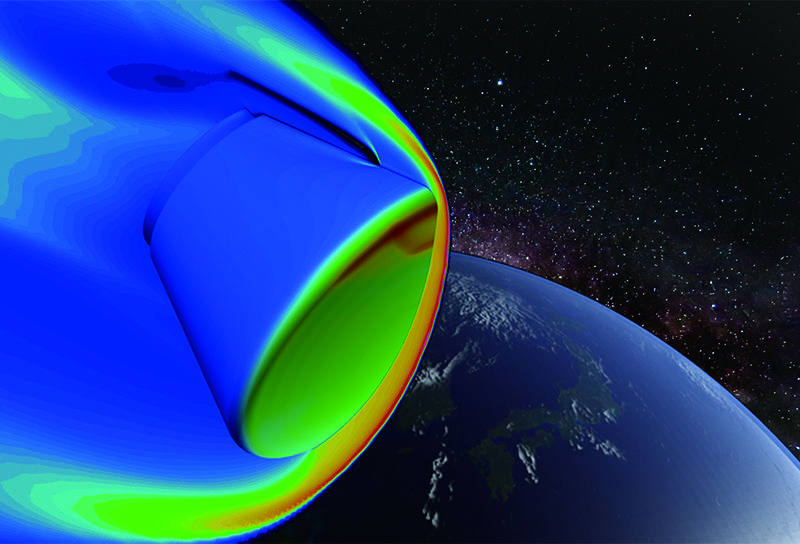Research and Development Directorate
Application of Aerothermo Dynamics CFD for HTV Small Re-entry Capsule Project
Continuous research effort on the high-fidelity numerical simulation to predict various physical phenomenon have been made in research and development directorate.
Efficient development risk identification and mitigation become possible by using numerical simulations rather than the high-cost experiments. In addition, an efficient investigation on the key physics mechanisms are also possible since the detailed physical data distributions are available.
Numerical simulations have been applied to wide variety of design problems such as the H3 rocket, the spacecrafts and the aircrafts.
LS-FLOW is one of the JAXA's computational fluid dynamics (CFD) codes, which is essential for the aerothermo dynamics problems to predict the high-speed flows over the rocket and the re-entry vehicles and resulting aerodynamic characteristics and the heat-flux.
Fujimoto has been the leading developer of LS-FLOW, and has made an effort to establish it for the practical use.
Fujimoto said that "LS-FLOW is essential tool to realize efficient and accurate design analysis with including the flow conditions and the shape variations."
He has been significantly contributed to the successful return-to-Earth mission from the international space stations by HTV small re-entry capsule (HSRC), which was recovered at off the shore of Minamitorishima Island in November 2018.

"We worked with the Aeronautical Technology Directorate and various other departments to conduct wind tunnel tests and numerical simulations. In the tests, we used LS-FLOW to create a faithful reproduction of the structure of the flow field, which undergoes complex changes with various air current conditions. This enabled us to successfully perform evaluations on the aerodynamic characteristics and the changes in the aerodynamic heating rate, both efficiently and with a high level of accuracy. And by this, we were able to contribute toward enhancing the accuracy of the guidance control (to make it fly correctly by controlling the aircraft's position, direction, and speed) and its reliable thermal protection system."
Until now, we were dependent on spacecrafts made by other countries for the recovery of supplies from ISS. This was the first time that Japan succeeded with its own recovery. The capsule was successfully loaded with the test results on ISS, and brought safely back to Earth. Fujimoto reflects on the moment of success as follows.
"It gave me confidence, and I was really moved. To have a system that you helped create be sent to space, and to have it actually come back to Earth, is a rare experience even within JAXA. I will make use of this experience to challenge myself to take on the next, even more difficult research issues."
Profile

|
|
|---|
- Home>
- Global Activity>
- Public Relations>
- JAXA’s>
- JAXA's No.78>
- Application of Aerothermo Dynamics CFD for HTV Small Re-entry Capsule Project